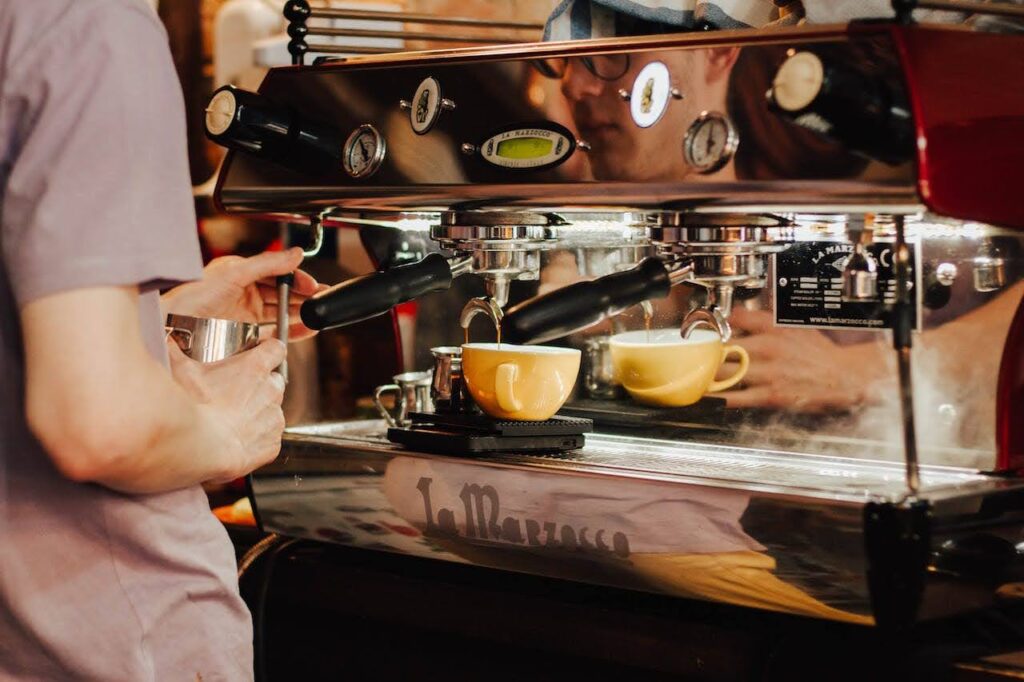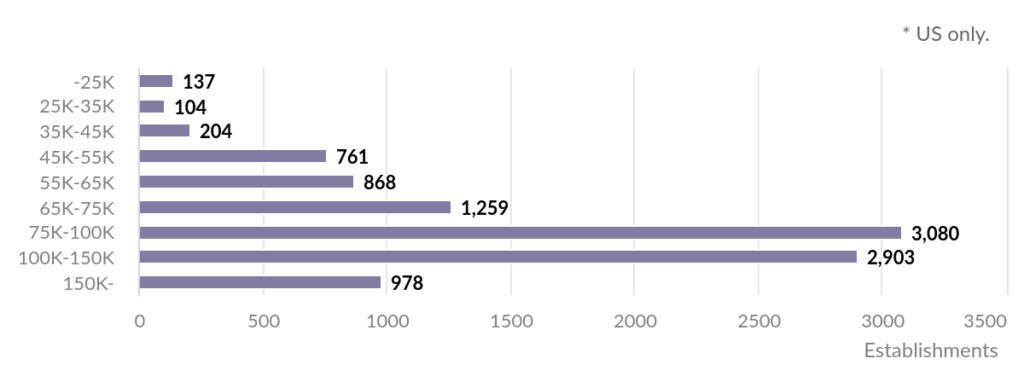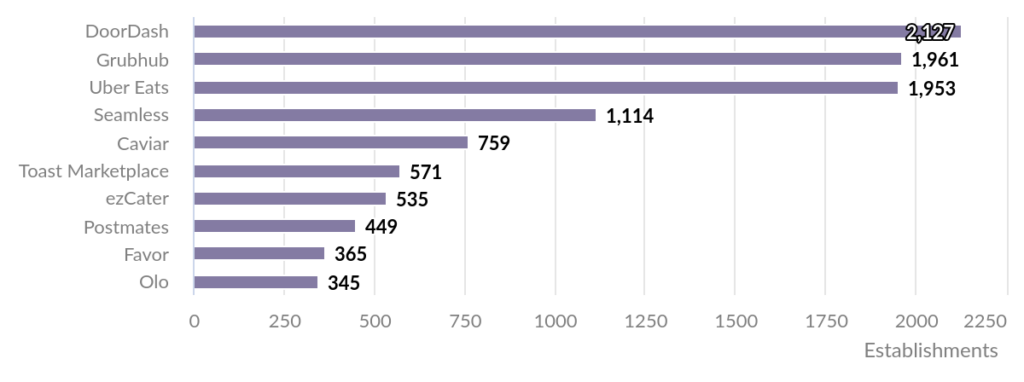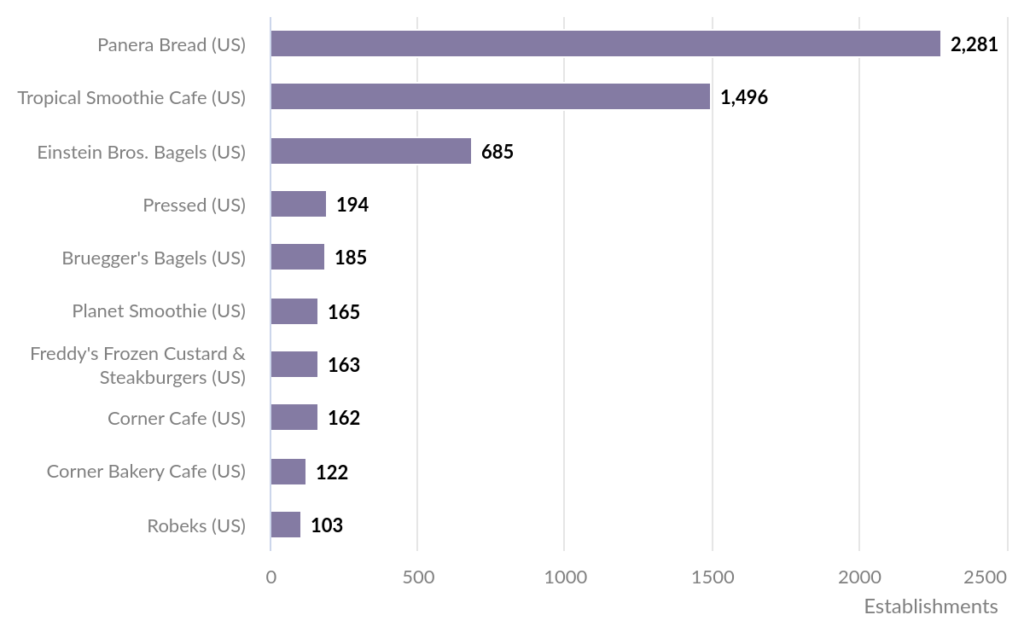
With 72,8821 cafes in the USA as of now, which cafes should you focus on to see the greatest return on investment?
Many food and beverage manufacturers and distributors have yet to fully leverage data analysis in their day-to-day operations. This article aims to shed light on how cafe data analysis can be a powerful tool for food businesses looking to boost their revenue.
Let’s explore how cafe data analytics can increase revenue for food manufacturers, distributors, and franchisors.
Data analytics helps identify populous cities where demand for cafe products is likely higher.
Supply chain owners can use this information to optimize distribution routes and inventory management, ensuring timely and efficient supply to areas with the greatest sales potential.
By analyzing average household income data in different areas, F&B manufacturers can tailor their product lines. They might focus on premium or specialty products that command higher prices in higher-income areas.
For example, the chart below is a breakdown of cafes across California, sorted by the average household income of the zip code they are located in. It suggests that most cafes are located in neighborhoods with an average income of over $75,000. This information indicates that cafes in California thrive in communities with a solid financial foundation.

Cafes in California by average household income by zip code. Source: Brizo FoodMetrics
Restaurant data analytics enables manufacturers and distributors to identify and partner with highly-rated restaurants and cafes.
Market intelligence platforms like Brizo FoodMetrics can pinpoint which restaurants are excelling in their service, reputation, and online presence. Working with cafes that are already popular and have high ratings can lead to better customer experience, stronger market presence and increased sales.
Using data analysis, suppliers can understand varying taste preferences across different regions in the US and Canada.
Suppose a restaurant database shows that customers in a coastal city are increasingly interested in plant-based diets. A supplier could then propose the introduction of almond milk, oat milk, and coconut milk as alternatives to dairy in local cafes for customer satisfaction.
For F&B manufacturers and distributors, understanding regional cuisine trends is crucial. Data analytics provides valuable insights into popular cuisines in different cities or states.
Let’s say market data from Brizo indicates that in Southern California, there’s a rising trend for fusion cuisines, blending Asian and Mexican flavors.
A supplier could then work with local cafes to offer products like matcha-flavoured croissants or Mexican hot chocolate.
Delivery service preferences change by state, city, and neighborhood. Market intelligence platforms provide detailed, location-specific data on in-use technologies. Restaurant tech companies and delivery marketplaces can use this to their advantage.
For example, by using market intelligence, they can see that Texas cafes are most commonly listed on DoorDash, followed by GrubHub and Uber Eats.. This data helps them understand their market share and make more strategic sales and growth decisions.

Cafes in Texas by delivery marketplace. Source: Brizo FoodMetrics
Suppliers can use data about popular menu items to see what cafes sell or might want to sell. Market intelligence platforms like Brizo help suppliers create focused sales campaigns to provide cafes with these items.
It makes it easier for suppliers to meet the needs of cafes and for cafes to please their customers.
Manufacturers and suppliers have a golden opportunity to partner with the biggest franchises by leveraging market intelligence platforms.
For instance, if a food supplier discovers through food data analytics that a particular cafe chain has a large number of locations in a certain city, they can approach that chain with a special wholesale offer.
Using market intelligence platforms, suppliers can also gather detailed information about a franchise’s competitors, as well as the latest trends in ingredients, services, and technology. These data insights help suppliers understand the market and plan their own strategy accordingly.

US cafes by chain. Source: Brizo FoodMetrics
Staying competitive in the fast-paced world of cafes and restaurants requires more than just a good cup of coffee; it requires smart, data-driven decisions. Brizo offers precisely that.
With actionable insights into over 1.5 million establishments across Canada and the US, our foodservice market intelligence platform equips suppliers and cafes with the knowledge they need to adapt, thrive, and increase revenue.
Ready to brew up some business growth? Sign up for a free trial on Brizo today—no credit card required—and start turning data into dollars.